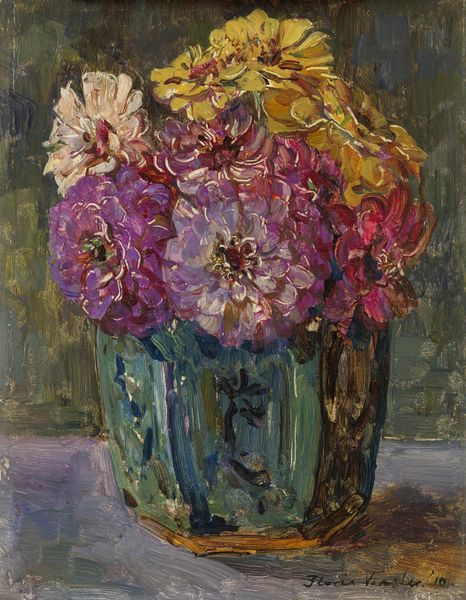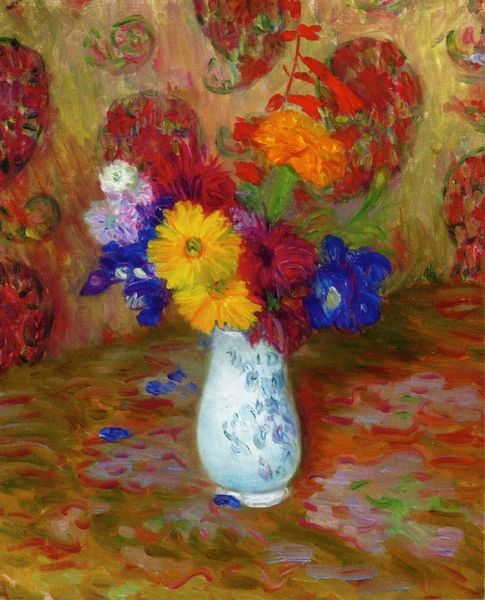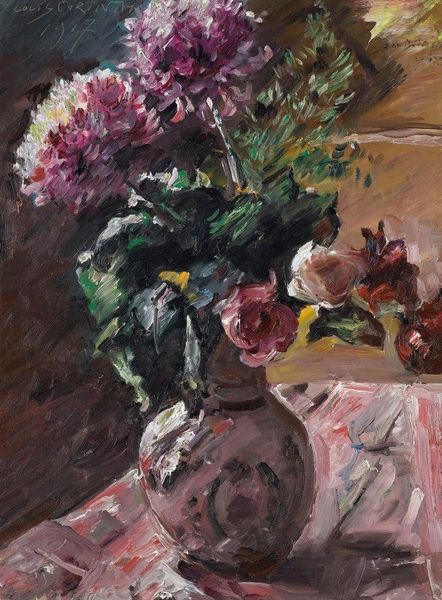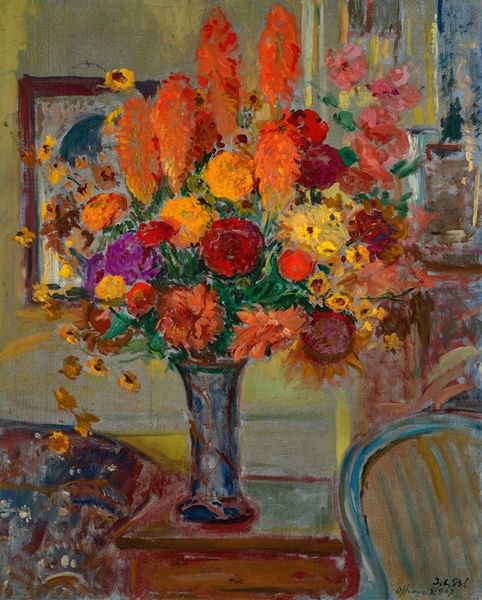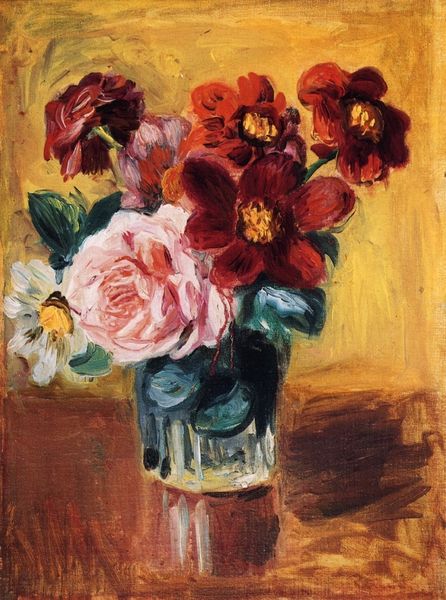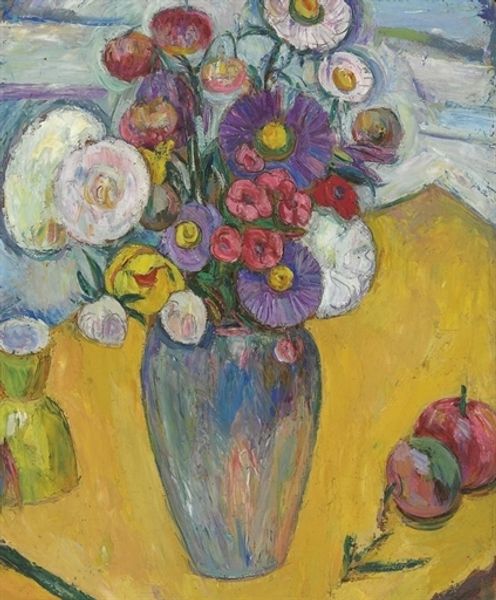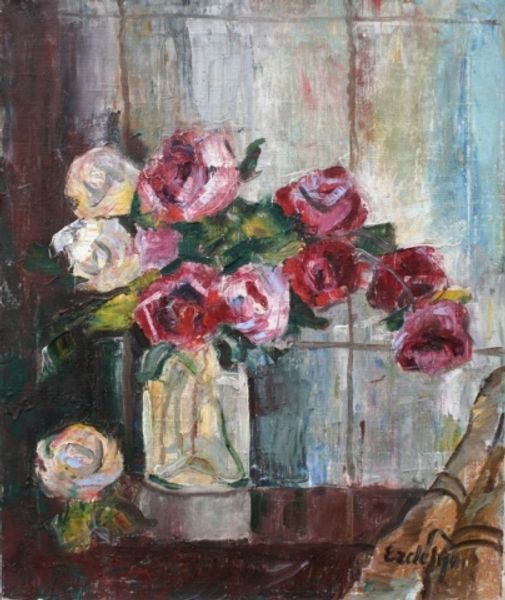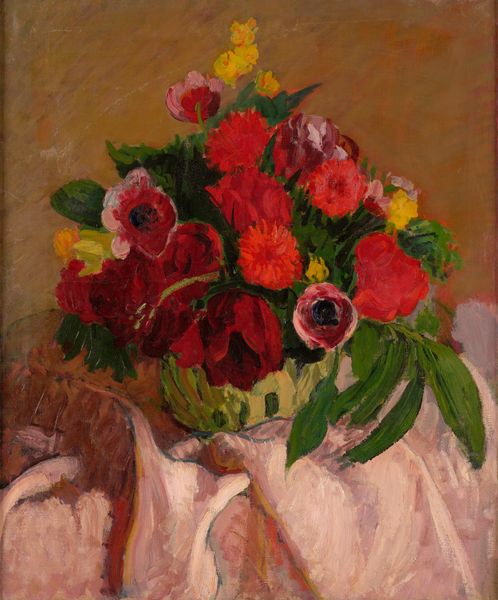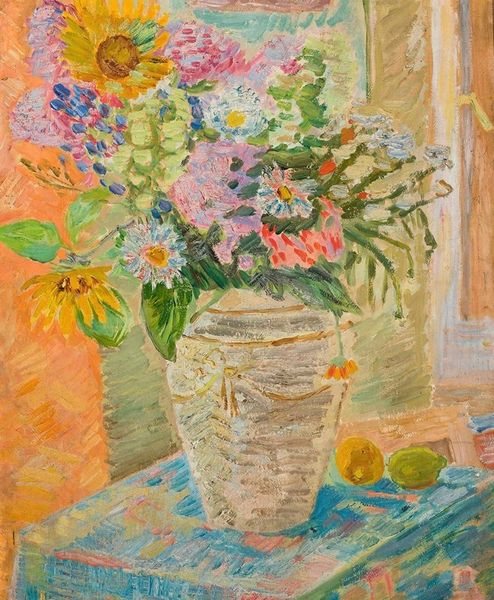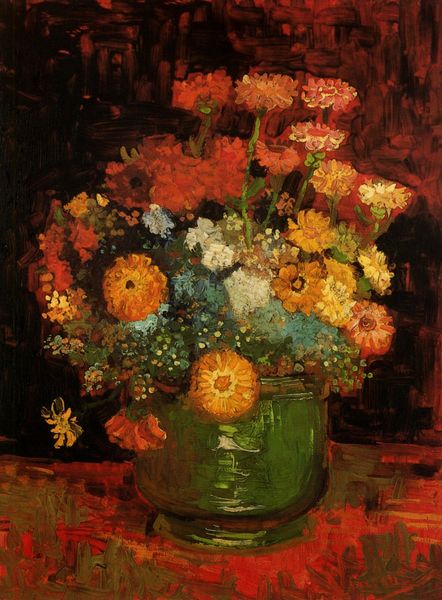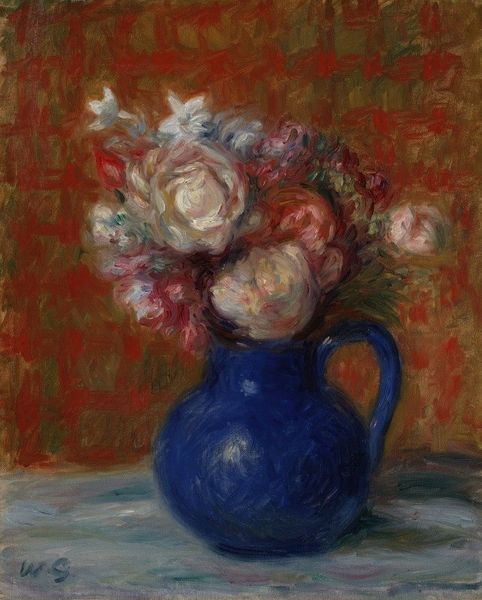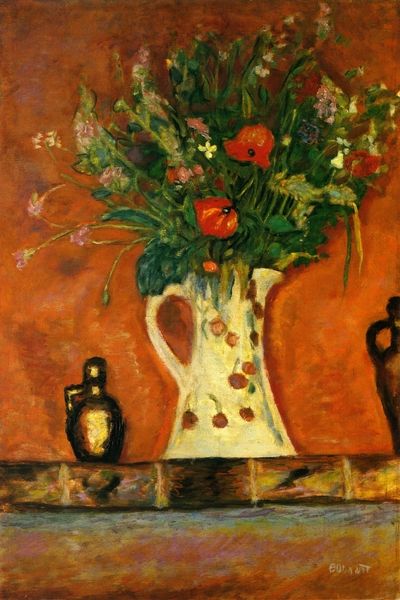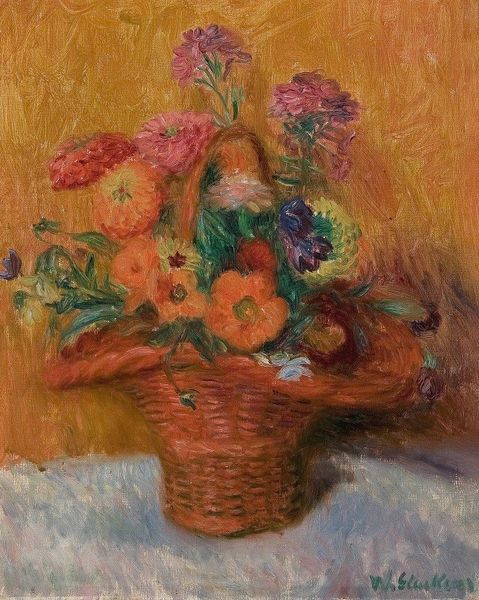
painting, oil-paint
#
still-life
#
art-nouveau
#
painting
#
oil-paint
#
oil painting
#
intimism
#
post-impressionism
Dimensions: 40 x 45.5 cm
Copyright: Public domain
Editor: Pierre Bonnard’s "The Blue Pot," a still life, seems to burst with warmth despite its subject matter. It’s currently held in a private collection, and I’m really taken with how vibrant the flowers are against that warm background. What's your interpretation of the choices Bonnard made here? Curator: The vibrant colours immediately pull our attention to the central image of the flower arrangement; how does it challenge traditional still life in its era, considering social shifts influencing art around that period? Bonnard, as part of the Post-Impressionist movement, often broke away from traditional academic constraints, emphasizing personal experience, intimacy and domesticity, rather than mere representation. Do you notice anything unusual about the way it's painted? Editor: It's the sort of freedom from rigid representation. It feels more about emotion than an exact likeness of the objects presented. It fits into the trend towards subjective experience. But what about his emphasis on such everyday subject matter? Curator: Precisely. Bonnard celebrated the intimacy of daily life at a time of rapid industrialization and urbanization. Everyday objects – flower pots, books, fabrics – elevated and considered as aesthetic equals is central to Bonnard’s intimism. It mirrors a yearning to find beauty in mundane objects which also reflects a rising middle-class appreciating art beyond the grand historical narratives favoured by earlier generations. The display, choice of color and object placement creates this intimacy. Do you get the sense that Bonnard challenges the artistic establishment? Editor: Definitely, by embracing and highlighting these ordinary moments. It creates a democratization of beauty, almost? Curator: An excellent point. What seems simple is politically nuanced and reflective of a moment in transition, wouldn't you agree? Editor: I do agree. Considering it within the broader historical context makes it a lot richer. Curator: Absolutely! Considering how socio-political factors are connected in art interpretation enhances our appreciation.
Comments
No comments
Be the first to comment and join the conversation on the ultimate creative platform.
